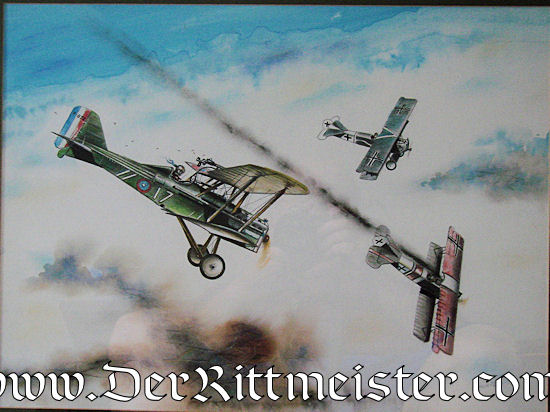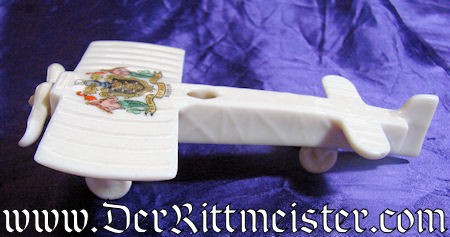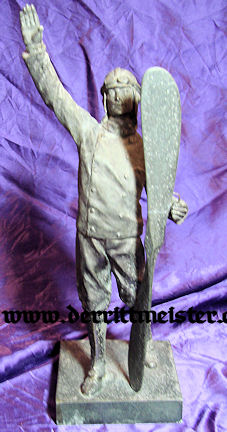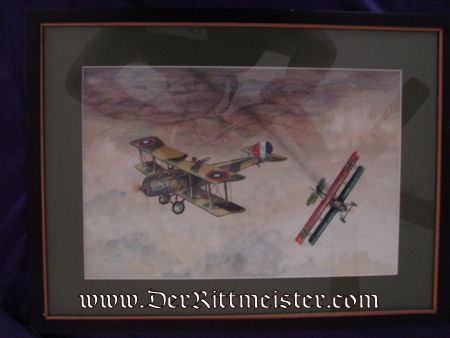Description
JACK D. HUNTER – ORIGINAL PAINTING – FEATURING AMERICAN SE 5 ATTACKING A PAIR OF FOKKER D. VII’s
My good friend, the late Jack Hunter, was both an accomplished writer (author of the legendary WW I aviation novel The Blue Max) and painter. The first example of his artwork appeared with the release of The Blue Max’s 1st edition. The publisher would not pay for a color dust jacket, so Jack volunteered to provide the artwork. This way his first published effort had the benefit of a more professional-looking dust jacket.
Jack continued to paint for more than forty years. He did so mostly for relaxation and to stimulate his mind in between those times when he was writing books. His painting is prized by collectors and has appeared in several museums. In Jack’s paintings, the airplanes were the “stars.” He worked very hard to capture all of an airplane’s correct details. Before starting on a new painting, he first produced what he termed “work sketches.” Many of these were in color. He endeavored to correctly portray ALL his subject aircraft’s historical details before he began the full painting. Even if he had previously produced paintings of Fokker Triplanes, he still painted a new “work sketch” to ensure its story’s details were absolutely accurate. For Jack, his painting was an extension of his writing: he always was telling a story. He usually included a typed or handwritten description of each painting’s action. These generally were attached to its reverse, to help its new owner understand the painting and its particular airplanes.
Our action in this painting occurs during the summer of 1918. America has been in the war for more than a year. Not only are American Armies taking their place in the trenches, but American pilots are joining their French comrades at the Front. When we think of WW I’s U.S. Army Air Service, we more often picture French Nieuports and Spads (as flown by top American ace Eddie Rickenbacker). Yet Americans also flew British aircraft. Here we see a bold American in a British SE 5, diving on a pair of unsuspecting Fokker D. VII’s. [His plane has no squadron markings, but a number 17 appears on the fuselage. Its tail number is F-875. One can see shell casings coming from the top wing-mounted machine gun]! The American has already put one of the Germans out of commission. As Jack recounts in his description, the American pilot is diving under the two and next will determine if he can pursue the survivor, or should retire for another day. The crippled D. VII is smoking heavily on its way to the earth.
The two finest WW I British airplanes were the Sopwith Camel and the SE 5. The Fokker D. VII arguably was WW I’s best fighter airplane. It certainly was the best the Germans had to offer. The Allies thought so highly of the D. VII that the Treaty of Versailles obliged Germany to hand over any that were still flyable, and not build any more. In addition to the D. VII’s superior flying characteristics, it was powered by a high-horsepower Mercedes-Benz engine, which gave it tremendous straight line and diving speed.
Jack primarily produced two different sized paintings. This is the larger of the two. The painting measures 14 ½”x 19 ½.” The painting is single-matted. It sports a simple black frame, and its overall measurements are 19 ½” x 24 3/4.” This is a fine opportunity to obtain an original piece of artwork from a multi talented artist.






